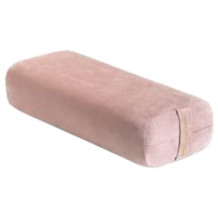Yoga mat purchasing advice: how to choose the right product
- What you need to know
- Without an underlay, exercise on the floor is uncomfortable, and there is a higher risk for injuries.
- A good yoga mat should be nonslip, provide sufficient cushioning to protect your joints, and allow pain-free exercise.
- The key factors are the material and thickness of the mat.
- Thin mats made of new wool are ideal for relaxing workouts and meditation, while dynamic exercise requires thicker mats made of synthetic materials or natural rubber.
- Allergy sufferers should opt for a model made from TPE foam that doesn’t contain latex or rubber.
A yoga studio at home
In today’s hectic world, many of us have found relief and inner harmony in the practice of yoga. Although it has become more and more popular in recent years, it’s still considered to be nothing more than a bit of stretching by some. But that’s far from it, as some styles are extremely demanding for your body and train both strength and endurance. Its greatest advantage is that you can do the exercises, or asanas, wherever you are without any special equipment. However, appropriate clothes and a yoga mat allow for much more comfortable training. A suitable mat is especially worth considering, since it can also be used for a number of other fitness exercises, like pilates or gymnastics.
For more convenience and better stability
Exercising on the floor can be quite uncomfortable without a mat and increases the risk for injuries. It’s easy to break a sweat when doing yoga, which can make your floor quite slippery. This is why a good yoga mat should be nonslip to always allow you a good footing. Depending on their thickness, yoga mats provide good cushioning that protects your joints and prevents pressure pain. This comes in particularly handy when doing exercises laying down or on all fours. The dampening effect might also be a blessing for your neighbors as they won’t be disturbed by every hop you do. In addition, the underlay also saves you from laying on the cold floor or in any dirt there may be down there.
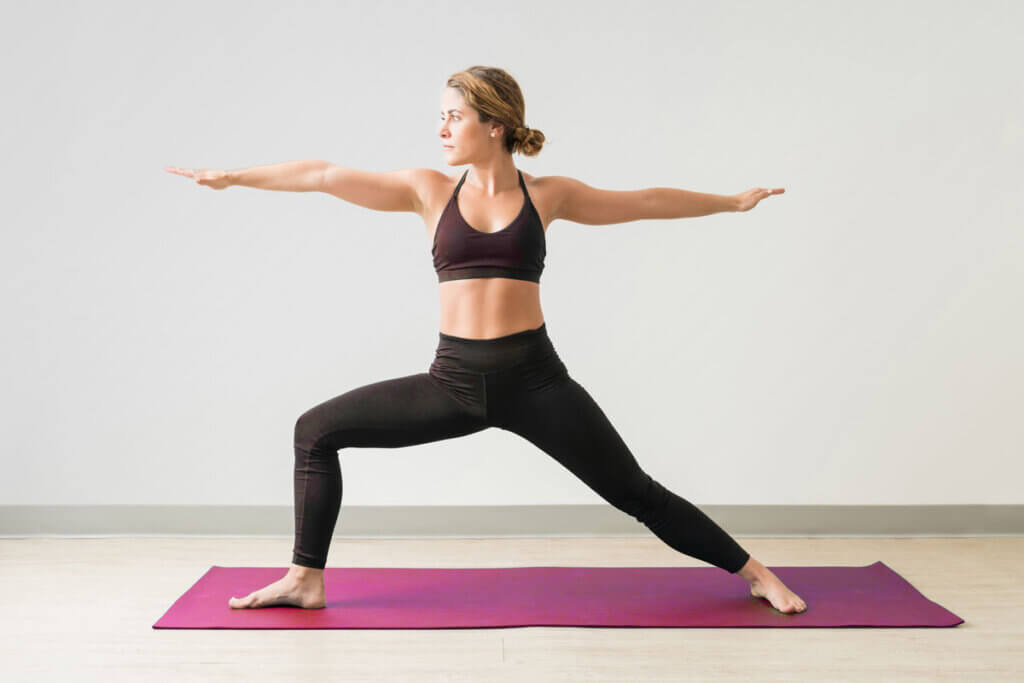
Is there a difference between yoga and gymnastics mats?
When looking for the right mat, you will come across a variety of different terms like “yoga mat,” “fitness mat”, “gym mat” or “pilates mat”. Usually there is no significant difference between these products and often times their names are used synonymously. Gymnastics mats are typically thicker than yoga mats and made of foam, so that they’re more cushioning than skidproof. Yoga mats by contrast are slimmer, lighter and offer more grip. They don’t have to be as cushioning but should allow a good footing. Aside from that, there are special yoga mats for calm yoga styles and meditation that are particularly thin and made of new wool which makes them not as soft and slip-proof as what you want for dynamic exercises. Thicker yoga mats may can also be used for other fitness exercises.
The advantages of having your own yoga mat
Most yoga studios and gyms let you borrow a mat for a session. That’s a good option for beginners as you can try out mats and don’t have to spend money on them. In the long run, however, it pays to get your own yoga mat. This allows you to pick a mat that fulfils all your needs. It should suit the surface you’re usually training on and can be cleaned as you like. Good yoga mats are lightweight and can be rolled up in a space-saving way to make transport as comfortable as possible.
Yoga in ancient India
Yoga mats are an invention of the 1970s. In ancient India, yoga was practiced mostly outside, either directly on grass or on cloths or furs. The grounds inside were primarily made of soil and clay and thus not slippery, meaning no underlay was necessary.
How to choose the right yoga mat
Yoga mats are mainly distinguished by their material, thickness and surface structure. The right choice for you depends on the style of yoga you like to do. Thick mats are more cushioning but are not ideal for stability exercises. Thin models are lighter, easier to roll up and transport. Other important criteria are slip resistance, quality and durability as well as size and prize.
What are yoga mats made of?
Many yoga mats are made from synthetic materials, but there are some made of natural materials like natural rubber, jute, new wool or cork. The latter are usually more expensive than synthetic mats. There are also mats made of combined materials, for example with a synthetic bottom and a top made from new wool. The choice of material defines characteristics such as the slip resistance, the comfort and the robustness.
Synthetic yoga mats
Synthetic mats are especially robust and easy to care for, since they’re usually machine washable. Many modern ones are made using thermoplastic elastomers (TPE). The advantage of this material is that it doesn’t require any plasticizers, as it’s already very elastic. Mats made from polyvinyl chloride (PVC) on the other hand, do need the controversial plasticizers to ensure a smooth consistency.
Synthetic models are generally nonslip, shock absorbing and ideal for ashtanga or power yoga and other demanding fitness exercises. Thanks to their durability and high material density, they are well suited for outdoor use and don’t give in to rocks or other sharp-edged objects.
Rubber yoga mats
Natural rubber is extracted from rubber trees and primary used in car tires. Yoga mats made from this material are just as robust as synthetic models, but usually aren’t machine washable. They can, however, easily be cleaned with a damped cloth or in the bathtub.
Yoga mats made of natural rubber have a particularly good grip and therefore are very slip-resistant. They stick well to the floor and offer good support for your hands and feet. A disadvantage of natural rubber is its odor, although this does fade over time. It’s best to leave new mats outside for a while before using them for the first time. Compared to other materials, natural rubber is not quite as lightweight.
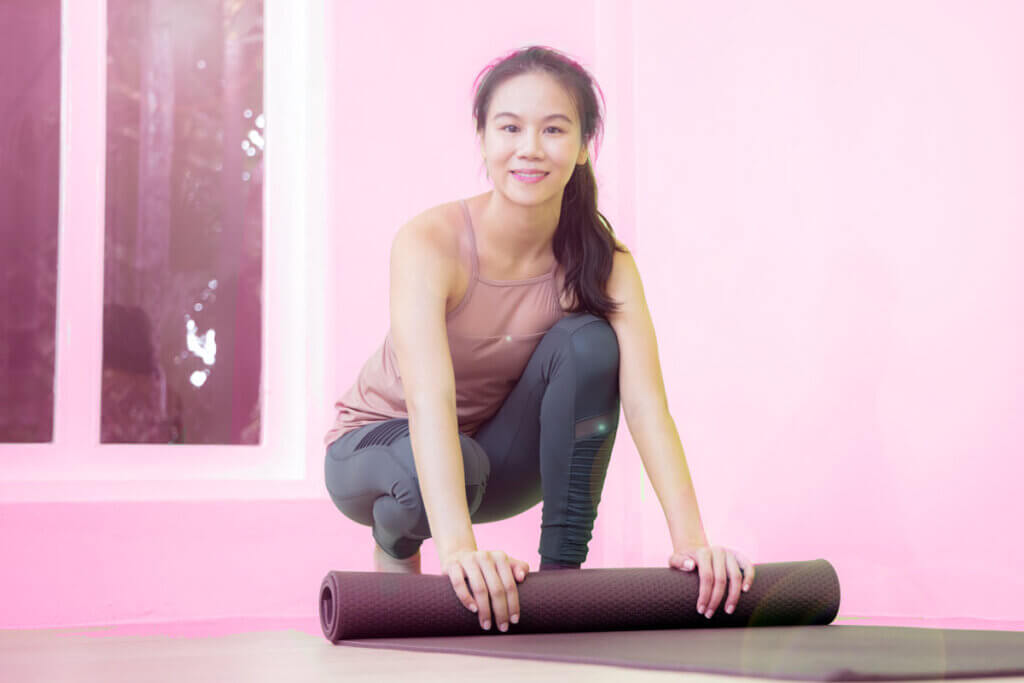
Jute yoga mat
Jute yoga matts are resilient, non-slip and offer a good grip. They provide great footing for balance exercises, are especially lightweight, and effectively absorb moisture. They can be easily cleaned with water or in a washing machine. Their rough surface makes them a little less comfortable than other models though. That’s why jute mats are often combined with latex or synthetic materials. Unlike rubber or synthetic mats, jute mats don’t cushion so well and hence aren’t well-suited for dynamic fitness exercises.
Cork yoga mats
Cork is elastic, water-repellent and breathable which makes it another environmentally friendly alternative to synthetics. The material is characterized by its closed cells that makes it impenetrable to dirt, sweat and dust. These features makes cork mats ideal for allergy sufferer. As cork is not as slip resistant, the undersides of these mats are often coated with synthetic materials or rubber to provide secure hold.
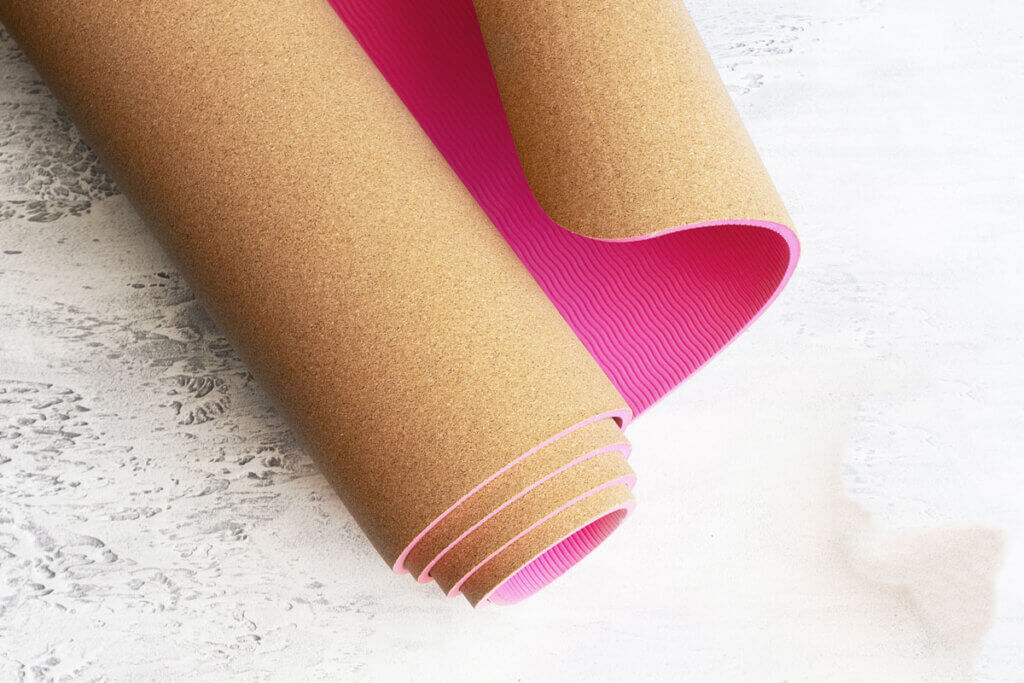
Woolen yoga mats
For yoga mats made from new wool, natural fibers obtained from the fur of sheep, goats or angora rabbits. The soft wool is pleasant on the skin and allows a comfortable workout. In addition, the material isolates well, which makes it a good choice for cold floors. On the downside, it’s doesn’t provide as much grip as other materials. That’s why it’s not ideal for demanding exercises with quick pose changes. Instead, woolen yoga mats are perfect for calm yoga and meditation. Their underside is usually covered in rubber, latex or synthetics for better grip on the floor.
Slip resistance
A yoga mat shouldn’t be slippery, neither on the ground nor for your hands and feet. This ensures a safe footing at all times and thus minimizes the risk of injuries. The mat should not crimp or stretch during exercise and should offer enough grip for both dry and sweaty hands and feet. This is why yoga mats often have a special coating. To maintain the nonslip quality, it is crucial to clean your mat regularly and gently.
Yoga mats made of synthetics or rubber are usually very slip resistant, models made of cork or wool, however, not as much. The latter can easily be upgraded by adding an ultra-thin nonslip mat underneath.
Beware of dust!
It’s best to store your yoga mat rolled up to avoid dust accumulating on it. Otherwise, the pores of the material may get clogged, which decreases the slip resistance.
Surface structure and comfort
The surface structure of a yoga mat is decisive for slip resistance and comfort. Materials such as jute naturally have a coarse surface and therefore are less slippery. Some people, however, don’t really like the feeling of it and instead choose models made of synthetics or rubber. These are typically perforated and come in a number of different surface structures, like with nobs or grooves or simply a smooth surface. What’s best for you is up to your personal preferences.
Thickness and cushioning
Thinner models of one to three millimeters are also known as travel mats as they are especially compact and light when rolled up. Ultrathin mats of 1 to 1.5mm are more like a towel and don’t provide any cushioning. They are suited as an additional underlay for other yoga mats to protect and keep them clean or for yogis who prefer a firm underground.
Beyond that, there are mats with a gauge of up to 15mm, just over half an inch. They are a good choice for you if you have sensitive joints. For balance exercises, on the other hand, they are far from ideal as they make them even harder. You also need to consider that they are heavier and not as easily rolled up and transported.
Measurements
Apart from the thickness, you should also keep the measurements of your yoga mat in mind. The length obviously depends on your own height. For comfortable exercising in a supine or prone position, your mat should offer space for your head and feet even when you’re stretched out. Most mats are between 5 ft 7 (1.7m) and 5 ft 11 (1.8m) long which makes them too short for many people. Extra-long yoga mats like the Jade Harmony Professional and the Bodhi Ecopro XL are 6 ft 7 (2m). Even longer are models by B MAT measure up to 7 ft (2.15m). The standard width for yoga mats is 24 inches (62cm) which is about enough for most people. You rarely find slimmer models but wider ones with up to 35 inches (90cm) are not uncommon.
Weight and mobility
If you use your yoga mat exclusively at home, the weight doesn’t really matter. If, however, you are also planning on doing yoga in different places like the park or a yoga studio, you’ll appreciate a lightweight model.
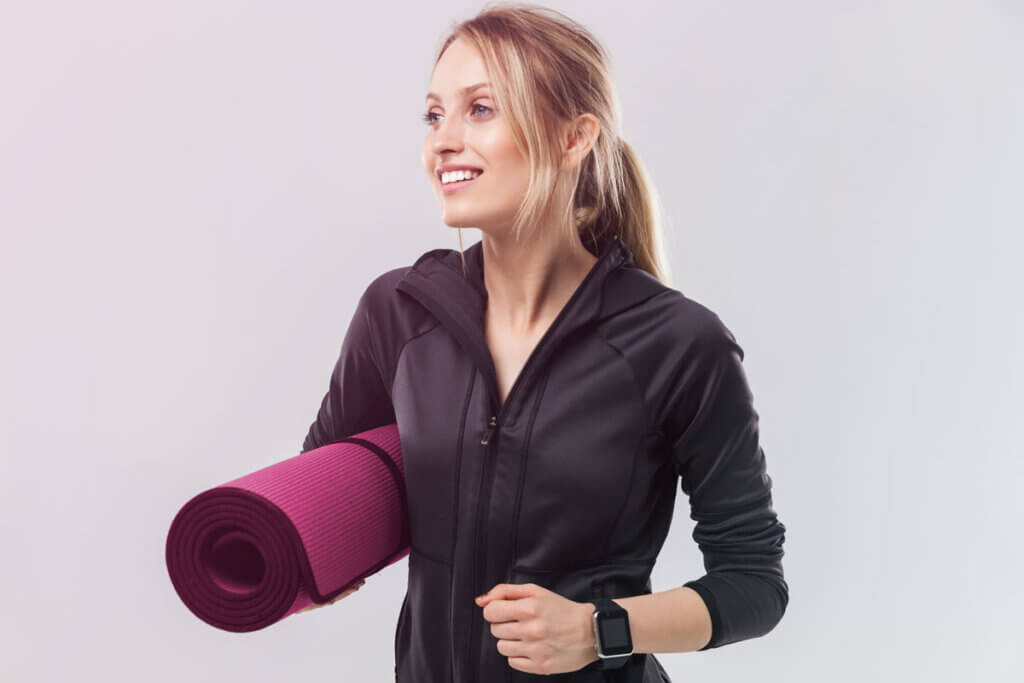
Really light yoga mats weight less than 2 pounds (1kg), others more than twice as much. For regular transport it’s a plus when the mat is so flexible that you can roll it up in a compact bundle. Most mats come with one or two rubber bands that hold the mat together and make transport simple. Some models even include a carrying strap.
Free of hazardous substances
Yoga mats come in close contact with your skin and should therefore be free of any hazardous substances. In the past, plasticizers like phthalates were often used in PVC mats. These are proven to have hormone-like effects which among other things may reduce your fertility. Nowadays, other plasticizers are used instead, but they haven’t been researched as much. Mats made of TPE are not known to contain hazardous substances and thus are a great alternative.
Unfortunately, not only synthetics can be polluted but also natural materials: Wool may be contaminated by pesticides, while natural rubber can contain latex proteins with allergenic agents or nitrosamines that are suspected of being carcinogenic. It is best to check for reliable labels on your mat that certify it as free of pollutants.
How much is a yoga mat?
Yoga mats have a wide price range. Cheap models are available for $20. Synthetics mats usually come at a better price than mats made from natural materials. The former can be purchased for around $20 to $40 and are particularly robust, slip resistant and durable. The more sustainable and environmentally friendly option are mats made of natural materials. These start at about $40. Typically, mats made of new wool are most expensive but there are some models that have silk incorporated and can cost $200 and more.
How to properly clean your yoga mat
Regular and proper cleaning is key to maintaining your yoga mat in tip top shape. There are a couple of things to consider based on the material and structure of your mat. Natural rubber mats, for example, shouldn’t be washed too hot while PVC mats are quite durable and machine washable.
How often should I clean my yoga mat?
Dirt on your yoga mat reduces its slip resistance so it’s advisable to clean your hands and feet before every workout. After an exhausting training session, you should always try to clean your mat with a damp cloth and wipe it dry afterwards. Even better are specialized yoga mat sprays made of essential oils that are disinfecting. You can also make your own spray with water and some tea tree oil. Should your mat still develop a bad odor, leave it outside for a while to air. You should deep clean your mat once or twice a year.
Is my yoga mat machine washable?
The answer to this question very much depends on the material of your mat. As a general rule, synthetic mats are machine washable. Mats made of natural material on the other side can usually not be cleaned in a washing machine. Rubber, for example, loses its slip resistance when it comes in contact with water and detergent. Always consult the washing constructions that you find either directly on your mat or on the packaging. To be on the safe side, hand wash your mat and avoid soap and detergents.
Intensive cleaning in the bathtub or shower
Cleaning your yoga mat by hand in your bathtub or shower is much gentler. Just follow these easy steps:
- Rinse your mat with lukewarm water until the water coming off is clear.
- Mix warm water and vinegar in a ratio 3 to 1.
- Wipe the mat with a sponge and the vinegar mix.
- Run lukewarm water until the mat is all covered and leave it soaking for a couple of minutes.
- Rise the mat with clear water and leave it out to dry.
Let your yoga mat dry thoroughly
After cleaning, you can wrap your mat in a towel and leave it hanging on the edge of the shower or bathtub. When it’s almost dry, you can hang it outside but avoid direct sunlight. In particular, rubber models dry out too much in sunlight and can become overly porous. Make sure the mat is completely dry before rolling it up. Otherwise, moisture may accumulate and cause mold.
Image 1: © AntonioDiaz / stock.adobe.com | Image 2: © Studio.SS / stock.adobe.com | Image 3: © vasanty / stock.adobe.com | Image 4: © Drobot Dean / stock.adobe.com

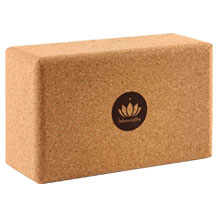
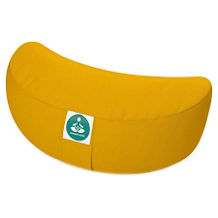
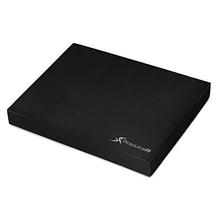
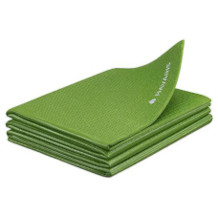









 16,590 reviews
16,590 reviews
